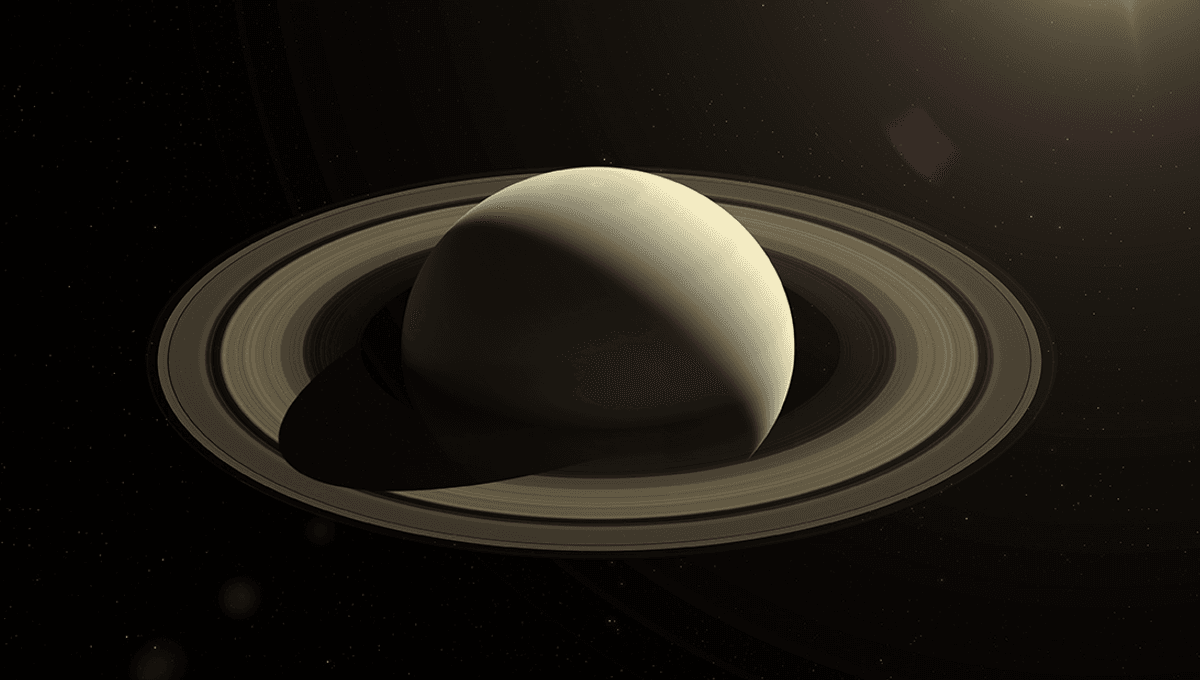
Saturn’s spectacular rings may be far older than we thought – according to a new study, they may have been there from the gas giant’s birth.
Saturn is thought to be amongst the oldest bodies in the Solar System, clumping together within 10 million years of the Sun’s formation, shortly behind Jupiter. For a time, scientists believed that its distinctive ring structure – made of ice particles and rock – was formed at the same time as the planet, around 4.5 billion years ago.
But when NASA’s Cassini spacecraft took a closer look, approaching the planet in 2004, it sent back evidence that appeared to contradict this age. Rocky bodies in the Solar System encounter dust, which ends up covering them. Looking at the rings up close, scientists saw that they were surprisingly clean, containing around 98 percent pure water ice by volume.
“It’s almost impossible to end up with something so clean,” lead author of one study attempting to age Saturn’s rings, Sascha Kempf from the University of Colorado Boulder, explained in a statement last year. “Think about the rings like the carpet in your house. If you have a clean carpet laid out, you just have to wait. Dust will settle on your carpet. The same is true for the rings.”
According to the team’s calculations, the amount of dust expected to land on the rings every year is around 166 billion tons. From this, they were able to predict the ring system’s age was put at around 400 million years old – a tiny fraction of the planet’s age.
However, a new team has attempted to model the collisions of micrometeoroids with the ice and rock that make up Saturn’s rings, occurring at typical velocities of around 30 kilometers per second (18.6 miles per second). They found that material from the impactors may not be accreted by the ring material as readily as previously assumed.
“We found that the complete vaporization and expansion of non-icy impactor material on energetic collision with a ring particle leads to the formation of charged nanoparticles and ions that are subsequently removed from the rings through collision with Saturn, gravitational escape or electromagnetic drag into Saturn’s atmosphere,” the team write in their paper, adding, “therefore, the concept of exposure age, which suggests that Saturn’s rings are young based on the cumulative accumulation of dark micrometeoroid material, should not be solely relied on to conclusively estimate the age of the rings.”
In other words, the rings appear to be relatively clean, but that does not mean that they are young – in fact, they may be as old as the planet itself. The team suggests that further study, including looking at factors such as particle porosity and granularity, is needed to determine the true age of Saturn’s rings. This, in turn, could help inform us how they formed in the first place. Further study could tell us about other planets with ring systems.
“High-velocity impacts leading to the creation of charged nanoparticles and ions could potentially occur in places such as the Uranian and Neptunian rings and icy moons around giant planets,” the team suggests. “While this mechanism may not alter the bulk composition of the impacted target, it suggests that surface composition could change.”
The study is published in the journal Nature.
Source Link: Saturn's Rings May Be 4.1 Billion Years Older Than They Look